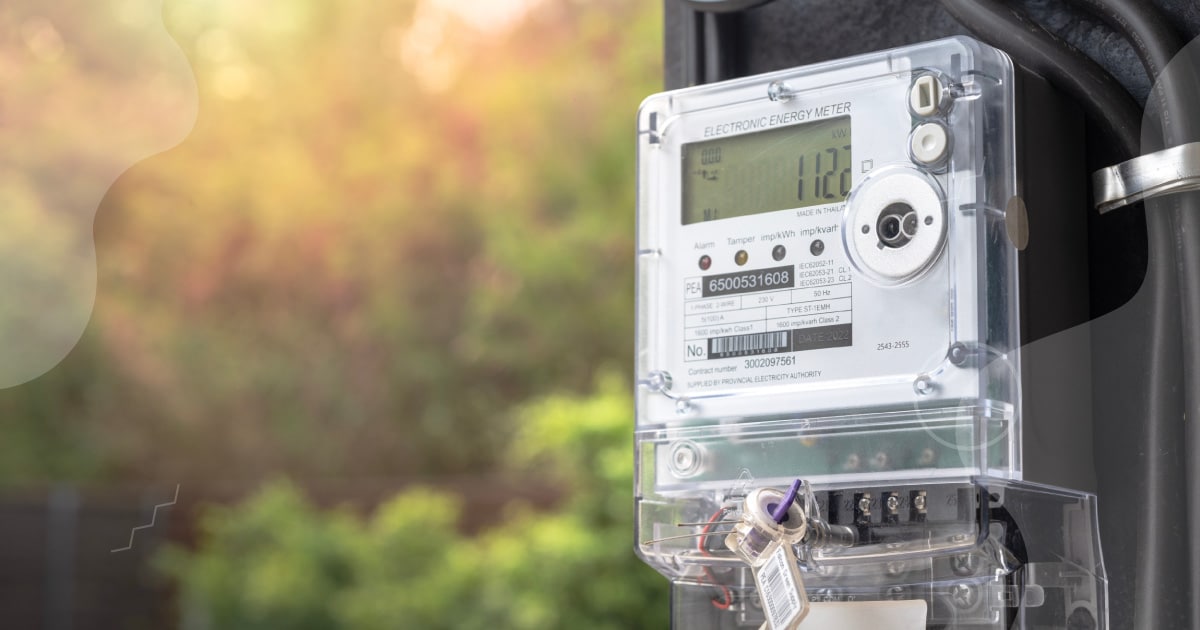Understanding Kilowatts - NEC Coop
Oct 30, 2023 — Electric Tips at Home, Resources

Energy bills and electricity providers frequently mention kilowatts and rates per kilowatt-hour. Even if these terms sound familiar, chances are, you’ve only touched the tip of the iceberg.
Understanding energy can seem intimidating, but with the right approach, anyone can grasp its basic concepts. One of the primary units you’ll hear in discussions about energy is the kilowatt (kW). Let’s break it down and make understanding kilowatts as simple as A, B, C.
What is a Kilowatt (kW)?
A kilowatt is a measure of power. Think of it as the rate at which energy is used or produced. If energy were water in a bucket, a kilowatt would describe how quickly we’re filling or emptying it.
1 kilowatt (kW) = 1,000 watts (W)
For context, a standard household light bulb consumes about 60 watts. So, 1 kW can power approximately 16 such bulbs simultaneously.
Watts are part of our daily life. In basic terms, more wattage means more energy used. A 100-watt bulb shines brighter than a 60-watt one because it uses more power. This means the 100-watt bulb needs more electricity to light up, which is why it has a higher wattage. Check your electric bill, and you’ll notice it’s charged in kilowatt-hours (kWh).
Kilowatts vs. Kilowatt-hours (kWh)
A kilowatt-hour (kWh) is a measure of energy consumed or produced over time.
- If you run a 1 kW device for an hour, you consume 1 kWh of energy.
- Think of it like this: If kW is the speed of your car (rate of energy use), kWh is the distance you’ve traveled (total energy used).
Consider a cordless electric kettle labeled as 1,500 watts. If you use it non-stop for an hour, it’ll consume 1,500 watts or 1.5 kWh.
Your electricity bill measures your usage in kWh.
Why Should Texas Families Care About kW and kWh?
Energy conservation and cost savings! Understanding how much power your devices use (in kW) and how long they’re running (resulting in kWh) can help manage your energy bills.
For Texas families facing hot summers, high AC usage can significantly impact costs. Recognizing and regulating this can lead to noticeable savings.
Calculating The Consumption of Your Appliance
Knowing how to compute appliance power use can help us manage home energy expenses. Here’s the formula for kilowatt-hours:
Watts x time (hours) ÷ 1,000 = kWh.
Using our earlier kettle example, if we boil water with our 1,500-watt kettle for six minutes:
1,500W x 0.1 (six minutes) = 150, which is the kilowatts consumed. Divide 150 by 1,000, and we get 0.15 kWh.
If your rate is 12.80 cents per kWh (as of Dec 2020, U.S.), boiling for six minutes costs: 0.15 kWh x 12.80 cents = 1.92 cents.
Online kWh calculators can also help you understand and find energy savings opportunities.
What’s the Typical Daily kWh Usage?
The Energy Information Administration stated that in 2019, a typical U.S. household used an average of 10,649 kilowatt-hours (kWh) annually or 10.65 megawatt-hours. This breaks down to about 877 kWh monthly, almost a megawatt-hour (mWh) each month.
Tips to Manage Your kW and kWh Usage
- Energy Audit – Start by identifying energy hogs in your home. Appliances like air conditioners, space heaters, and ovens tend to consume more power. Knowing which devices use the most energy will help you manage them better.
- Peak Hours – Energy costs can be higher during peak demand hours, typically in the late afternoon to early evening. Limit high kW device usage during these times if possible.
- Energy-Efficient Devices – Look for appliances and devices with the ENERGY STAR label. These consume less power (fewer kW) and, in turn, result in a lower kWh on your energy bill.
- Unplug – Devices can still consume energy even when turned off. If it’s not in use, unplug it. Over time, these “phantom” energy vampires can add up.
- Limit AC – Given Texas’s heat, this might seem challenging. However, setting the thermostat a few degrees higher or using fans can reduce energy consumption without sacrificing too much comfort.
Examples in Daily Life
- Cooking – Use a microwave or toaster oven for smaller meals. They typically use less energy than conventional ovens.
- Laundry – Wash clothes in cold water. Around 90% of the energy used by washing machines goes to heating the water.
- Lighting – Switch to LED bulbs. They provide the same light as incandescent bulbs but use about 75% less energy.
Understanding kilowatts isn’t just for the energy savvy. It’s a practical skill that, when used, can lead to significant savings and a smaller carbon footprint. With a few small changes, families can take control of their energy consumption and make informed decisions that benefit both their wallets and the environment.
Sources:
“kW and kWh Explained,” Scholar Schools, https://www.solarschools.net/knowledge-bank/energy/electricity/kw-kwh-explained
“Light Bulb Efficiency,” PennState University, https://www.mrsec.psu.edu/content/light-bulb-efficiency
“Measuring electricity,” U.S. Energy Information Administration, https://www.eia.gov/energyexplained/electricity/measuring-electricity.php
“How to Calculate Kilowatt-Hours (kWh Calculation),” Inspire Clean Energy, https://www.inspirecleanenergy.com/blog/sustainable-living/how-to-calculate-kwh-kilowatt-hours
“How much electricity does an American home use?” U.S. Energy Information Administration, https://www.eia.gov/tools/faqs/faq.php?id=97&t=3;
“Tips for Managing Your Electric Usage,” New Hampshire Department of Energy, https://www.energy.nh.gov/consumers/energy-efficiency/energy-efficiency-programs-and-services/tips-managing-your-electric
Voted #1 Electric Provider
We were recently voted the #1 Electricity Provider by the Corpus Christi Caller-Times’ Best of the Best Awards for the 7th year running!
Benefits of Membership
As a member of our co-op, you’ll enjoy the following benefits:
- You’ll get a share of our profits.
- You won’t be locked into a long-term contract.
- You’ll get a simple, competitive rate with no surprise fees or markups.
- You can get a $50 bill credit for every new member you refer.

